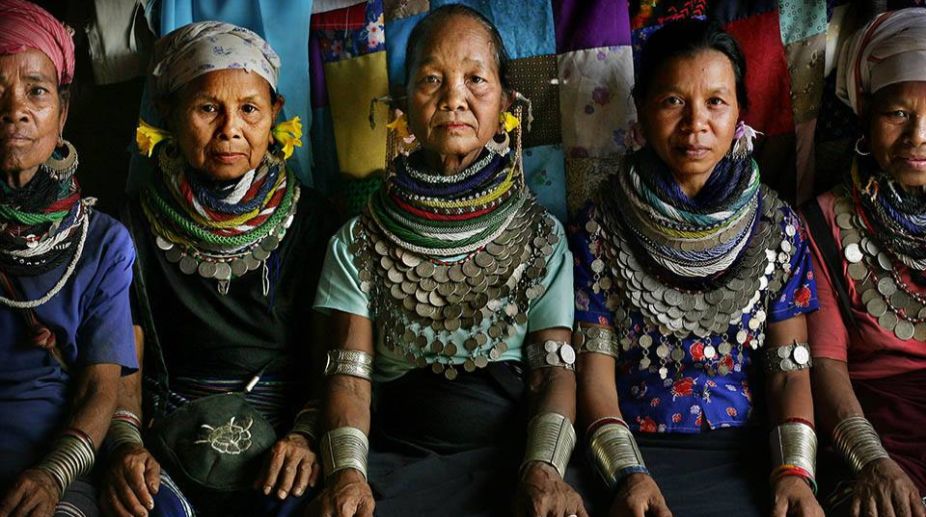The last batch of Mizoram Bru refugees permanently settled in Tripura (The Hindu)

- 16 Jan 2024
Why is it in the News?
The Tripura government has allocated land for the rehabilitation of the last batch of Mizoram Bru refugees, who were granted permanent settlement in Tripura through a Home Ministry-initiated quadripartite agreement signed on January 16, 2020.
Who are Bru refugees?
- Brus, also referred to as Reangs, are a tribal community indigenous to northeast India and have historically resided in parts of Mizoram, Tripura, and Assam.
- In the state of Tripura, the Brus are a designated Particularly Vulnerable Tribal Group (PVTG).
- Most Brus residing in Tripura today have suffered more than two decades of internal displacement, fleeing ethnic persecution primarily from the neighbouring state of Mizoram.
Bru-Reang Refugee Crisis:
- It all started in 1995 when the Young Mizo Association and the Mizo Students' Association demanded that Brus be eliminated from Mizoram’s electoral rolls as they were not indigenous inhabitants.
- Being ethnically distinct from the majority of Mizos, the Brus are often referred to as “Vai” in the state, meaning outsiders or non-Mizos.
- Tensions escalated after the Brus retaliated against the Mizos’ attempts to disenfranchise them, and organized themselves into an armed group, the Bru National Liberation Front, and a political entity, the Bru National Union.
- They also demanded the creation of a separate Bru Autonomous District Council (ADC) in western Mizoram as per the provisions of the sixth schedule of the Indian Constitution.
- However, their attempts at seeking greater autonomy were foiled and resultant ethnic clashes forced many Reangs in Mamit, Kolasib and Lunglei districts of Mizoram to migrate to neighbouring Tripura in 1997.
- Today, roughly 35,000 Reangs continue to reside in north Tripura’s Kanchanpur camp as refugees, as per Home Ministry estimates.
Have there been any attempts to resettle the Brus?
- The state governments, along with the union government have made multiple attempts to send Brus back to their homeland in Mizoram.
- But until 2014, following eight rounds of resettlement, only an estimated 5,000 individuals, or 1622 Bru-Reang families returned to Mizoram in various batches.
- In July 2018, the governments of Tripura, Mizoram, and the central government concluded a quadripartite pact with Bru community representatives to resettle refugees in Mizoram.
- This was however opposed by not only native Mizo groups but also by the Reangs who feared threats to life and further ethnic repression in their home state.
- Efforts were still made to pursue the terms of this pact. The supply of free ration to relief camps was halted on instructions of the Home Ministry in a bid to hastily complete the repatriation of refugees, which resulted in at least six starvation deaths.
- Sensing a failure of the 2018 pact, the four groups once again came together in January 2020 to sign another quadripartite pact to resettle the Brus, this time in the state of Tripura.
- The central government earmarked a Rs 600 crore package to aid the rehabilitation efforts, and the Bru families were promised a residential plot, a fixed deposit of Rs 4 lakh, a Rs 1.5 lakh grant to construct their houses, as well as free ration and a monthly stipend of Rs 5,000 for a period of two years.
- Additionally, the renewed 2020 pact also promised to include the displaced Reangs in the electoral rolls in Tripura.
BRU REFUGEES (The Hindu)
- 30 Oct 2023
What is the News ?
The Bru refugees have been granted permanent settlement in Tripura as part of a centrally sponsored rehabilitation arrangement, which means they won't be taking part in Mizoram elections for the first time.
Facts About:
- The Bru refugees, also known as Reang, are an indigenous community primarily residing in the Northeast of India, particularly in Tripura, Mizoram, and Assam.
In Tripura, they hold the status of a Particularly Vulnerable Tribal Group, recognized by the government.
- Ethnically, they can be classified into two main clans, Meska and Molsoi, and they belong to the Indo-Mongoloid racial stock.
Their languages are affiliated with the Austro-Asiatic groups within the Tibeto-Burman family.
- They speak a language called "Kaubru," which shares some tonal features with the Kuki language, although it broadly falls under the Kok-Borok dialect.
- Occupation-wise, they continue to maintain their nomadic traditions, with a significant number of them engaged in Hilltop Jhum Cultivation and various food-gathering activities.
- Their beliefs encompass a belief in spirits and the existence of the soul.
- Religiously, they follow Hinduism, with most of their deities being akin to gods and goddesses of the Hindu faith.
Traditionally, they practice endogamy, not marrying outside their community.
- In their cultural tradition, the village council chief, known as "RAI," has the authority to approve divorce and widow marriages.
